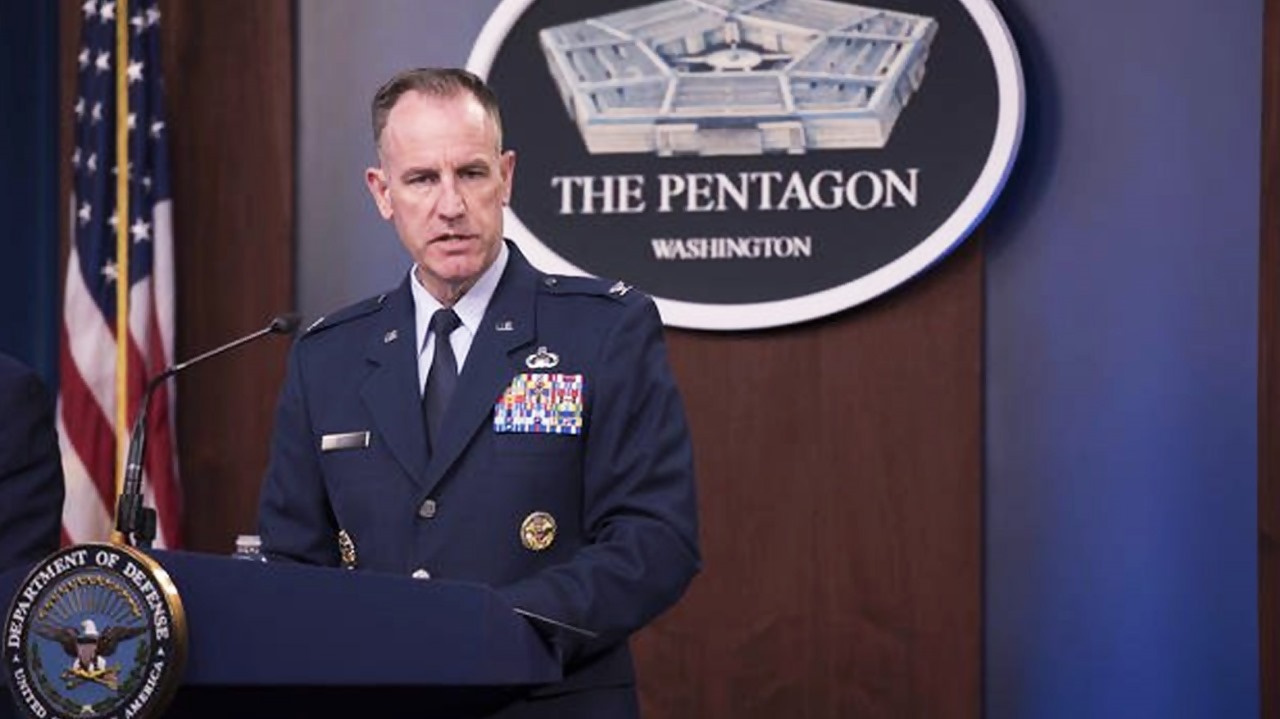U.S. Destroys Threatening Weapons Systems in Eastern Syria
The US strike occurred after “mobile multiple rocket launchers fired rockets that landed in the vicinity of MSS Euphrates and rockets were fired.

Dec. 4, 2024
WASHINGTON DC, United States (Kurdistan 24) CENTCOM announced on Tuesday that earlier that morning it had “successfully destroyed several weapons systems” which threatened U.S. and Coalition Forces in eastern Syria, near Military Support Site (MSS) Euphrates.
Pentagon Press Secretary Maj. Gen. Patrick Ryder discussed the event at length in a press briefing later that day.
CENTCOM’s strike came as conflict intensified in western Syria. Several militia groups, led by the jihadist Hayat Tahrir al-Sham (HTS), burst out of their long-time sanctuary in Idlib Province last week, and, moving east, captured Aleppo, Syria’s second-largest city in just two days.
The sudden success of the HTS-led offensive took many parties, including the U.S., by surprise.
Moreover, it has been followed by a militia push south toward Hama, Syria’s fourth largest city. The Associated Press reported on Tuesday that the rebel groups had succeeded in taking more territory, moving within six miles (10 kilometers) of Hama.
The militias are exploiting the weakness of Syria’s ally, Iran, and its proxy groups following their year-long war with Israel. The loss of Aleppo, along with a Russian base near the city, has triggered renewed Russian involvement in the Syrian civil war, as Russian planes, along with those from Syria, bomb the newly-successful militias.
The U.S. has denounced HTS as a terrorist group, and the militias’ sudden emergence complicates the U.S.-led mission in Syria and Iraq to ensure the continued defeat of ISIS.
But U.S, officials have repeatedly stated that the sole aim of the deployment of U.S. forces in the region is to counter ISIS—and not HTS.
Americans are tired of the Middle East’s “forever wars,” and the Biden administration is unwilling to take on any new military commitments in its last weeks in office.
This has hurt the Kurds in Syria, who are among those groups targeted by the militias. Yet the U.S. does not appear inclined to change its position.
Read More: Kurdish civilians flee as Syrian conflict escalates in Aleppo, Tall Rifat
Details of the U.S. Strike
The U.S. strike on Tuesday occurred after “mobile multiple rocket launchers fired rockets that landed in the vicinity of MSS Euphrates and rockets were fired,” Ryder explained.
That attack marked the second U.S. strike within a week. On Nov. 29, there was a similar U.S. attack in the same area against what Ryder described as “individuals [who] were observed preparing a rocket rail.”
The U.S. has some 900 troops in eastern Syria. Although they are there to fight ISIS, ISIS does not appear to have been behind the threatening measures that prompted the U.S. strikes. Rather, as both CENTCOM and Ryder suggested, pro-Iranian militias were likely behind the threatening moves that triggered the U.S. strikes, or, perhaps, Syrian forces.
In his briefing on Monday, State Department Spokesperson Matthew Miller was careful to say, repeatedly, that although Washington regarded HTS as a terrorist organization, the U.S. distinguished between HTS and ISIS.
Thus, even as there is a tendency among some analysts to lump all jihadi groups together, under the rubric, “Islamist,” HTS and ISIS are two different groups in the U.S. view, and the U.S, remains focused on fighting ISIS, but not HTS.
Ryder repeated that perspective on Tuesday—as a Turkish journalist was keen to point out.
Turkey opposes the Kurdish-led Syrian Democratic Forces (SDF), America’s main partner in the fight against ISIS in Syria. So the journalist asked if the U.S. would protect the SDF in northwestern Syria, although ISIS is not located there.
“Just to clarify,” the journalist asked, “unless it’s ISIS that is attacking the SDF, are they still under your protection,”so that you “would come to their defense?”
The question put Ryder in an awkward position, as he sought to balance between two opposing allies, Turkey and the SDF.
“As we work together to counter ISIS, we have come to the aid of SDF,” Ryder replied. “We’re working together. We’re partners in that.”
“But if the question is are we going to look at opportunities elsewhere, outside of that mission set,” Ryder added, “we obviously have to remember why we’re there and what we remain focused on.”
“We very much value the partnership that we have with the SDF,” he continued. “Our forces have fought alongside each other and bled alongside each other.”
“But our focus in Syria remains the Defeat-ISIS mission, and that will continue to be our focus,” Ryder concluded.
